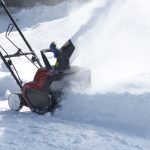Tree roots are an important part of the health of a tree. Unfortunately, they can also be difficult to deal with, especially when the tree is located near a house, utilities, or pavement. They are strong enough that they can cause structural problems, leading to break and the necessary repairs.

Roots versus pavement, courtesy user mrhayata via Flickr
Roots and Pavement
Particularly in areas with old growth trees that have developed over the years, pavement is being buckled and concrete is being creased as roots push up. When roots grow upwards to the surface and meet a non-porous surface, they will seek the gap between the soil and the pavement and grow thicker, compacting the soil and breaking the pavement. The best way to fix or avoid this is to provide a gap in the pavement or concrete for the roots to find and grow through.
Roots and Utilities
With so much being run under the surface, trees and utilities can get tangled up fairly easily. Having a root grow around fiber optic line isn’t so bad – having them grow through pipes, however, can be a serious problem. Roots breaking pipes is not as big a problem as many folks think, as pipes are generally tough enough to force the root to work around. However, when pipes fail at the joints, roots gain easy entrance into the system. Once there, they spread and the pipe environment encourages growth. The roots will block the pipes, which then require mechanical clearance. Chemicals can be used, but they can be dangerous or ineffective if not used properly. The most sure way to deal with roots in pipes is to dig in, remove the it and reroute it, and then replace the failed pipes.
Roots and Houses
Roots don’t do as much damage to the foundation of houses as many folks think – modern construction methods and materials simply won’t permit it. Smaller ones may work their way through cracks, but large ones are not capable of knocking out cinder blocks or punching holes in walls. The biggest issue can come from the shrinking of roots in a drought instead of their healthy growth. A drought can cause shrinkage, leading the soil cave away from a foundation, causing the possibility of subsidization.
Protecting Roots
While all of this can cause damage to property, you also have to be aware of damage that can be done to the root system of the tree, and the long-lasting effects it can have on the tree. If your solution is to block off the roots or cut off the roots, you can permanently damage the tree. Blocking them can cause girdling, which is when the roots wrap around the trunk itself, restricting the flow of water and nutrients. You’ll need to redirect them if possible, that’s the safest way to deal with invasive roots.
Avoiding Root Problems
Your best bet is to move forward and make sure you plan to avoid root problems in the future. This can mean re-evaluating hardscaping plans, where you ay want to plant trees, and where you may want to run utilities. The best bet is to provide at least four to five feet of space around a tree for growth, expansion, and development. However, larger trees may need more room, so check with an arborist before finalizing your plans.






